Abstract
While leprosy has been studied exhaustively by leprologists, it is only recently that persons in other disciplines have given this disease the attention it deserves. Various methods for its prevention and control are now being advocated and tested in the field, and it appears reasonable for an epidemiologist to review the bases of current theories and to examine the evidence for existing hypotheses. This has been done by a review of some of the more recent literature. The conclusion is reached that the anergic, or factor N, hypothesis that has been evolved to relate the lepromin test to the findings in clinical leprosy appears to be the most promising, and that, if this hypothesis can be substantiated, it is unlikely that BCG vaccination can be a very useful tool for prevention. Many possibilities exist for epidemiological and laboratory research into this disease, which in many ways appears to be unique.
Full text
PDF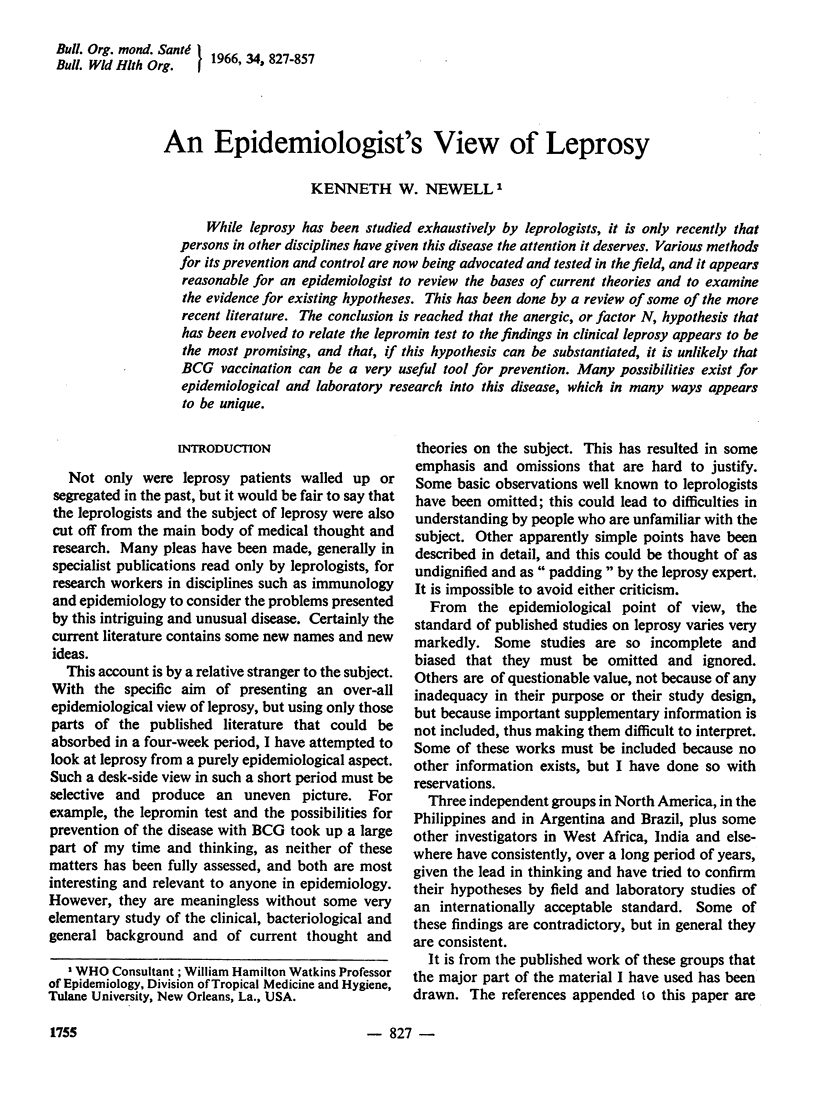
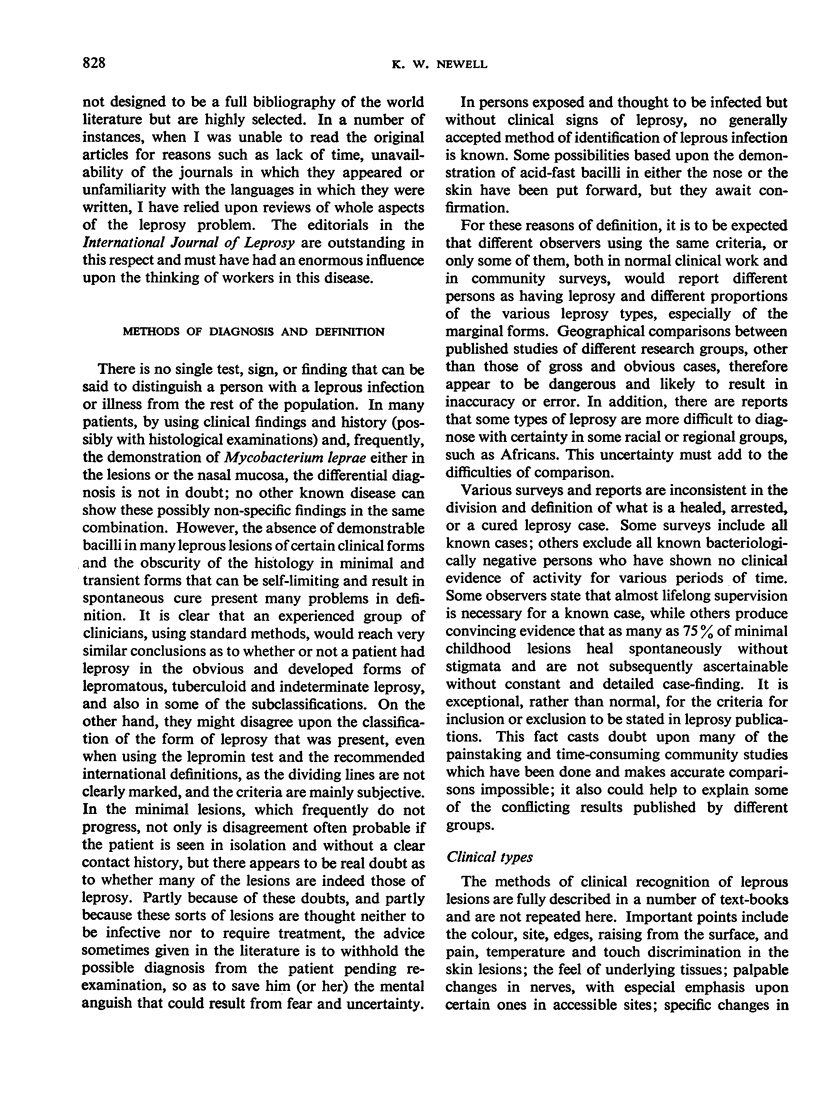
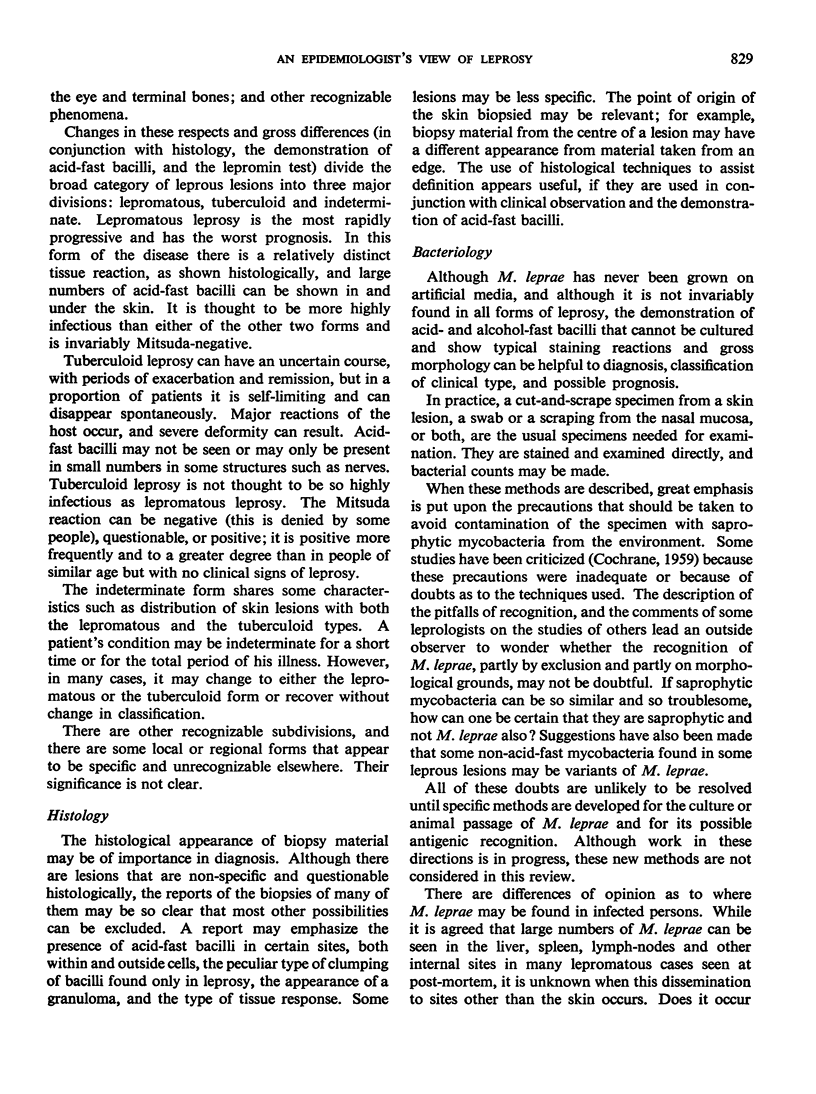
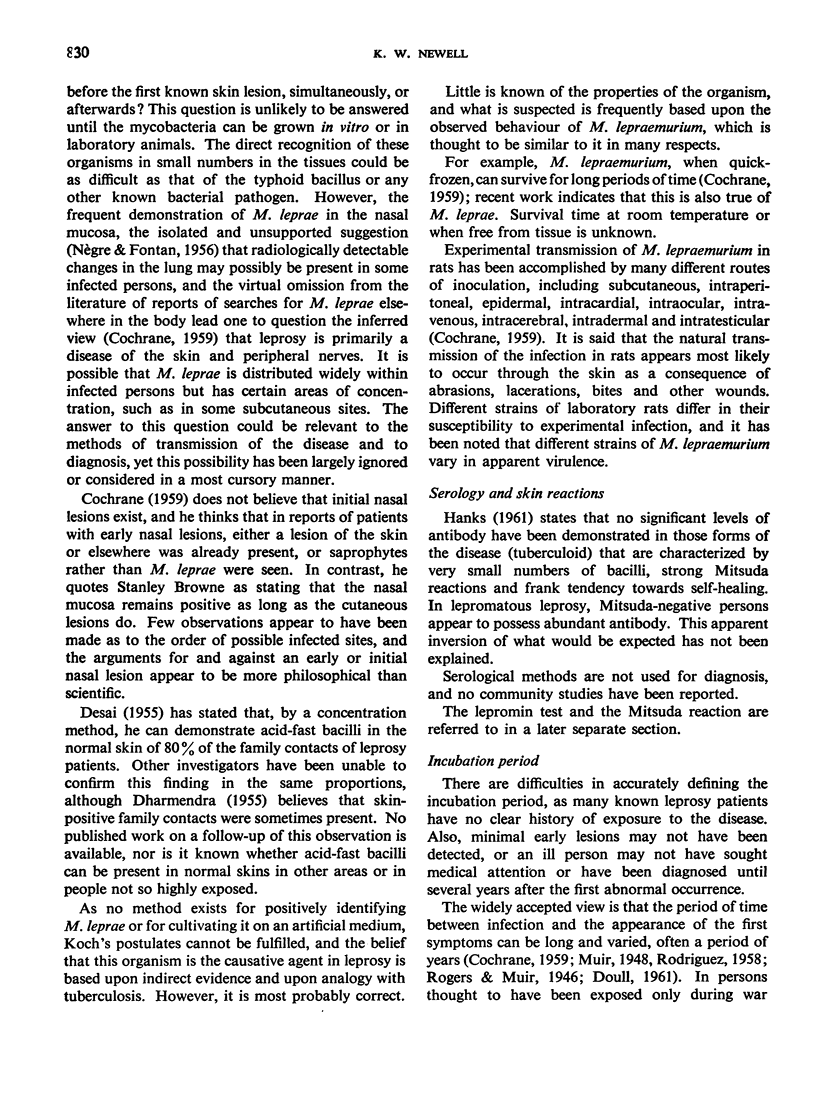
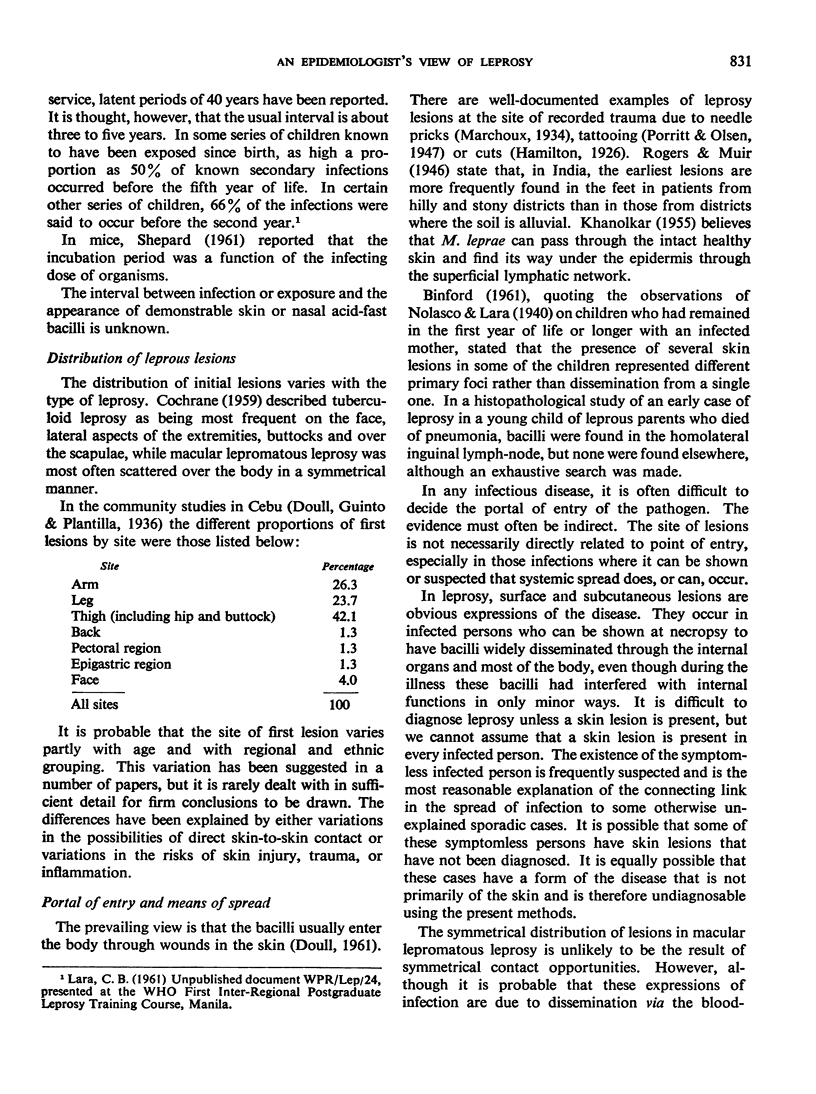
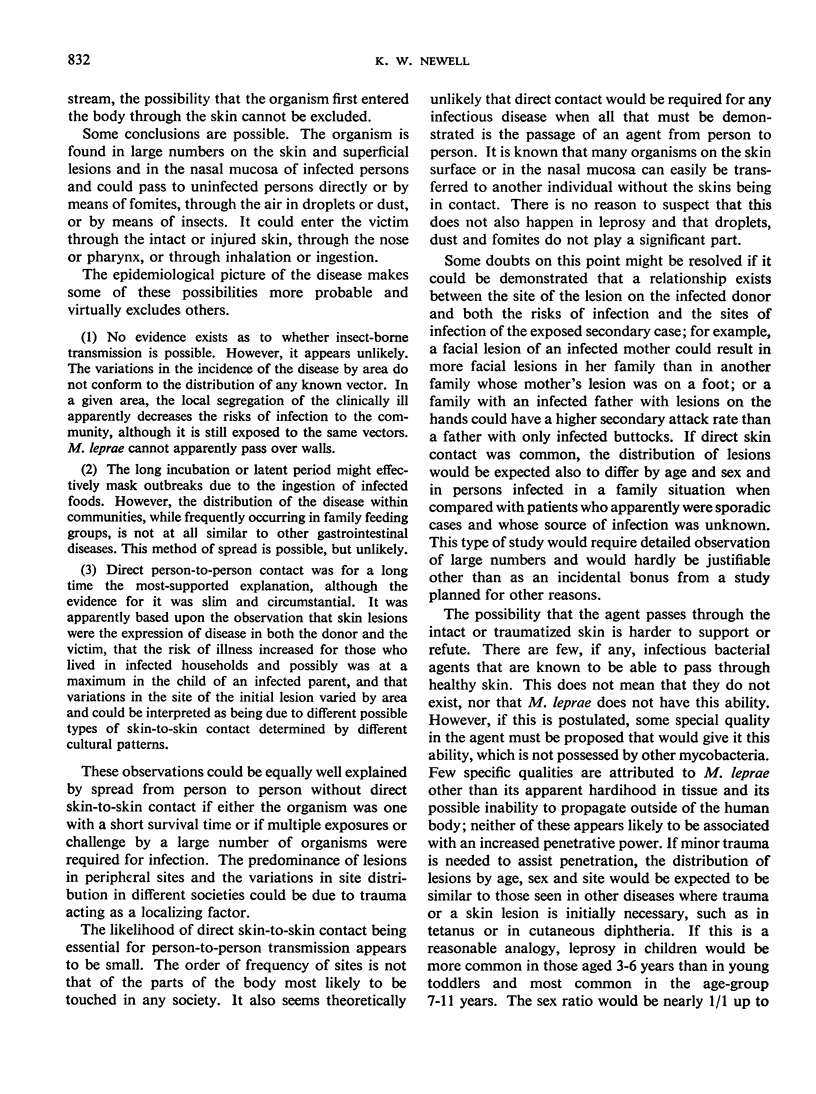
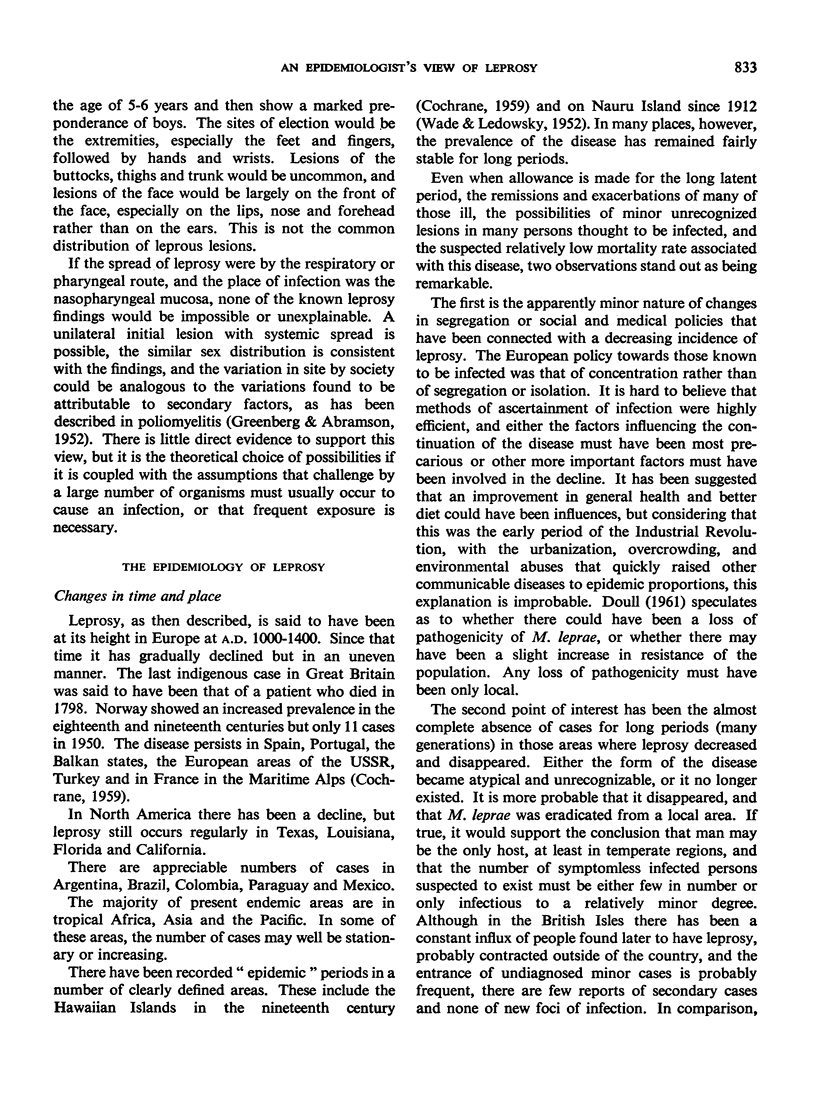
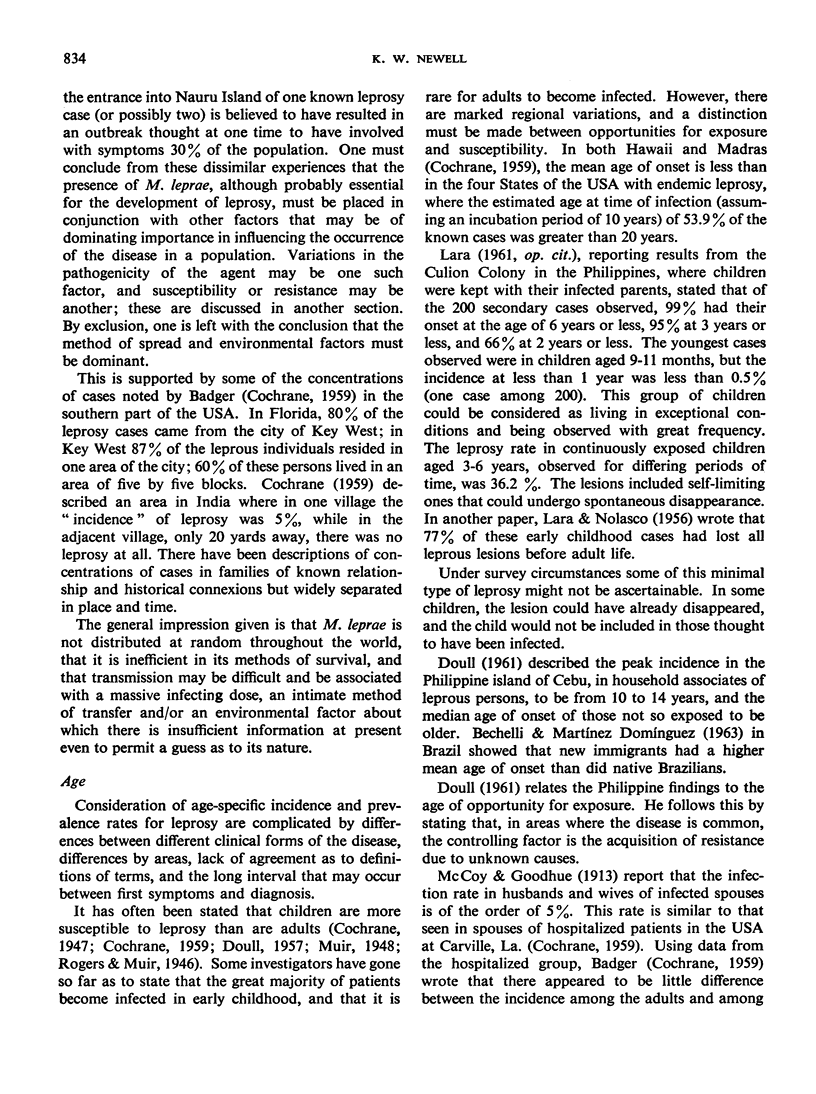
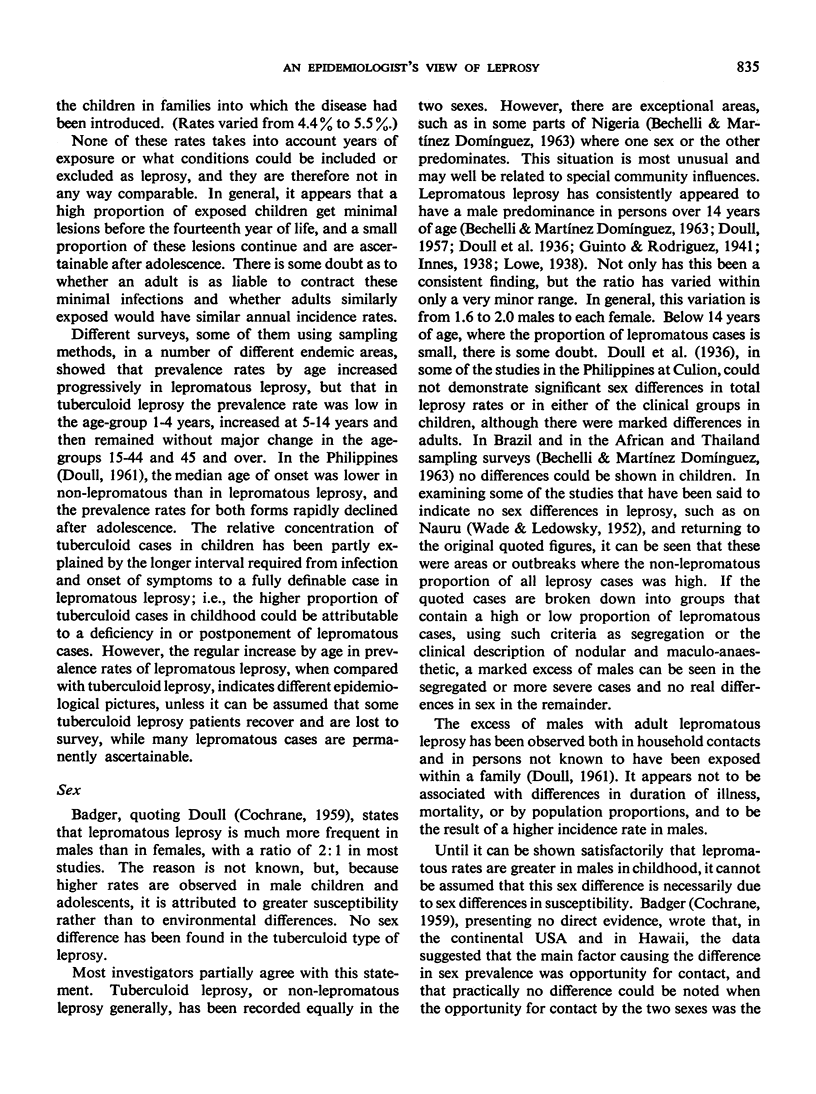
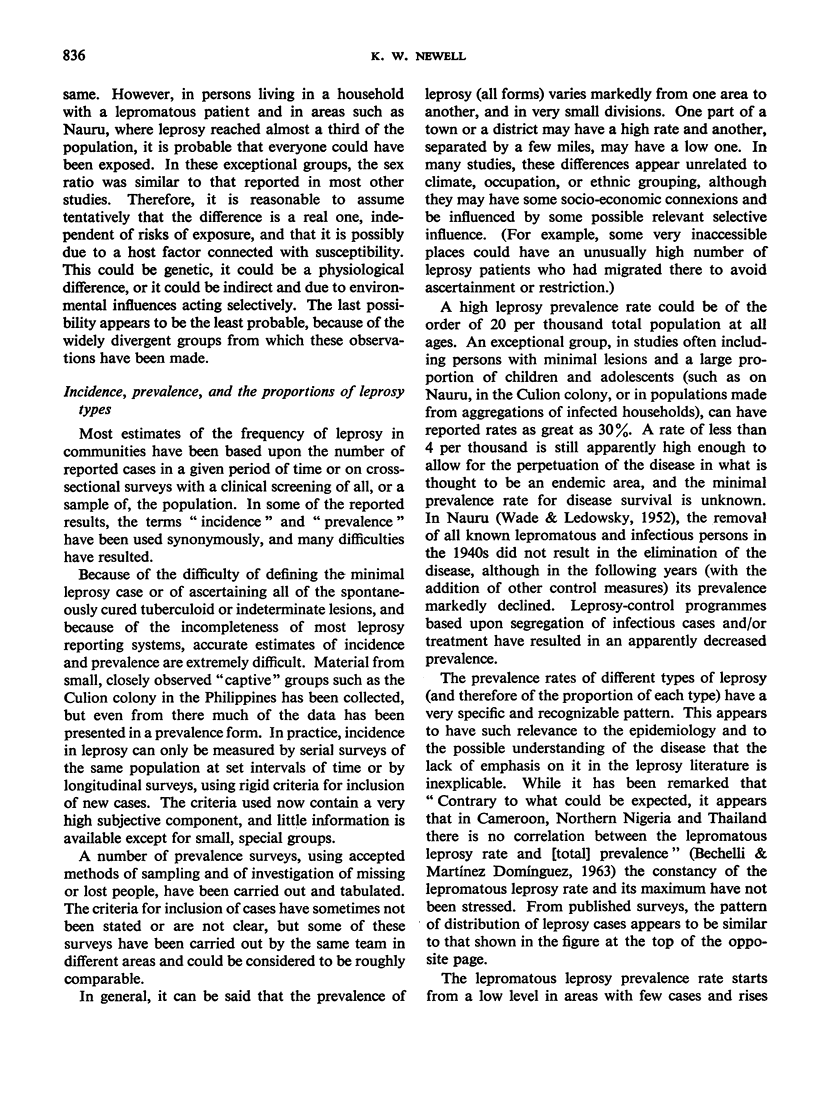
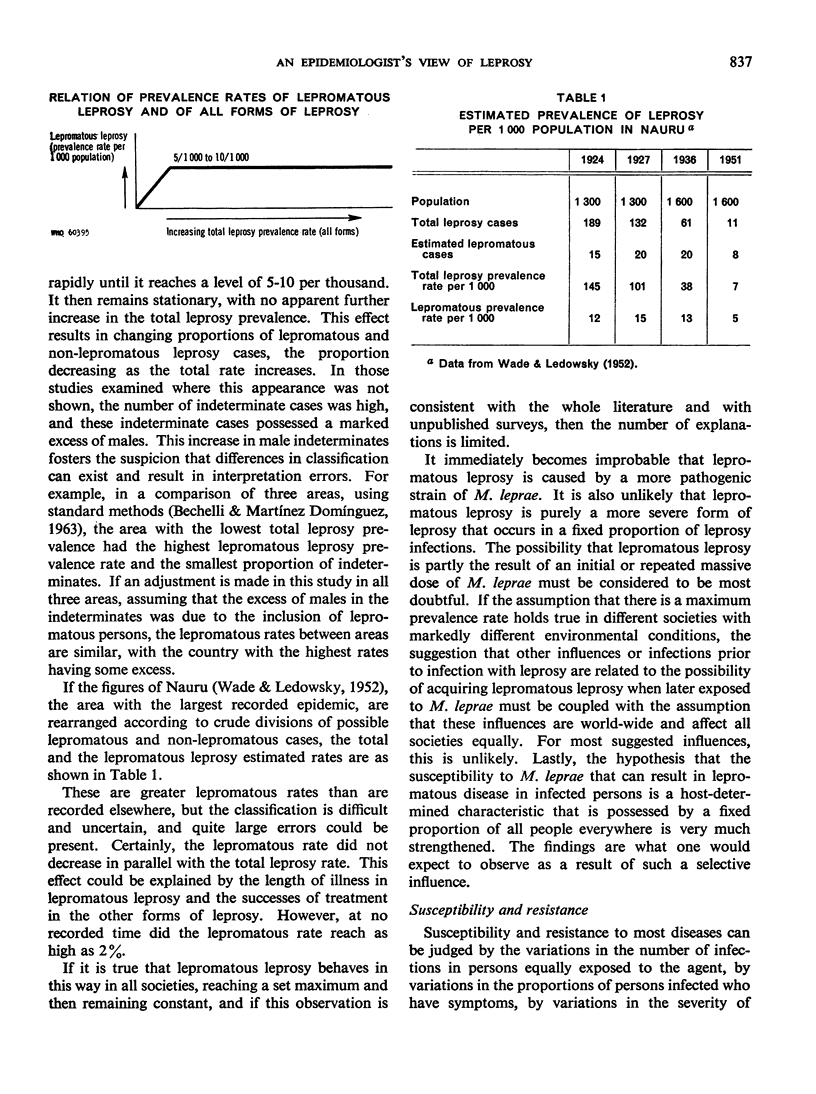
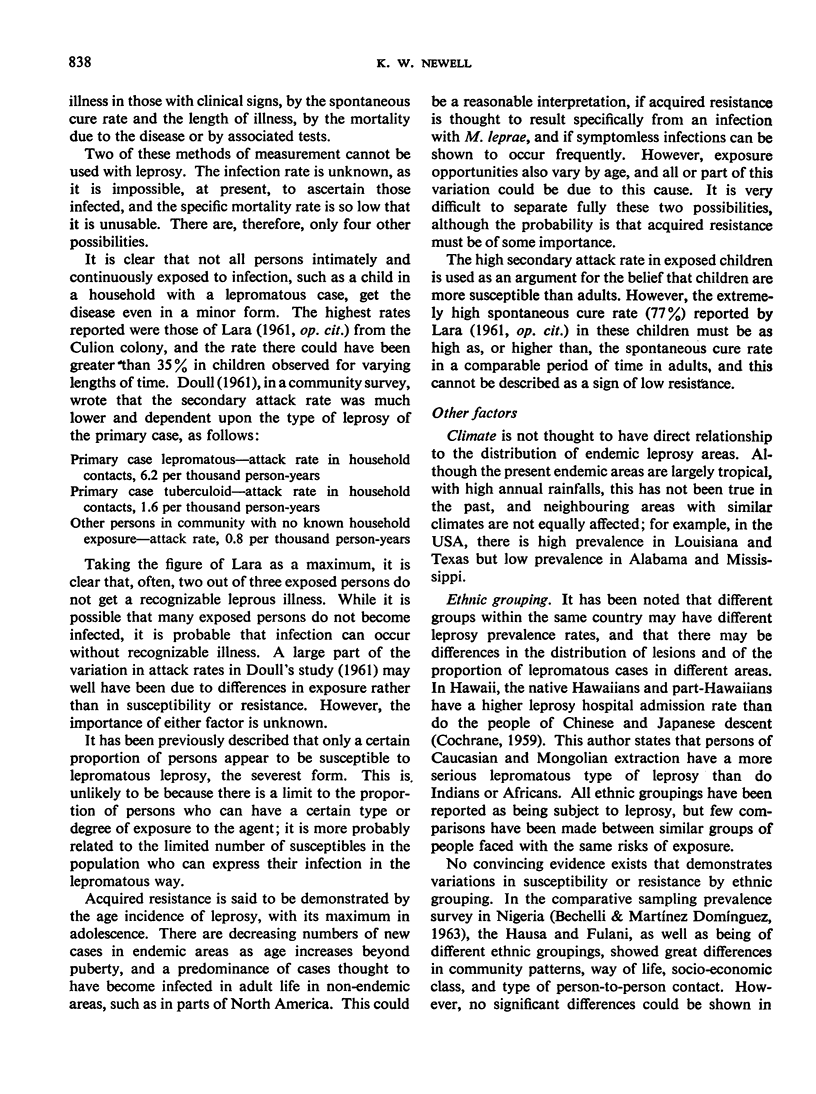

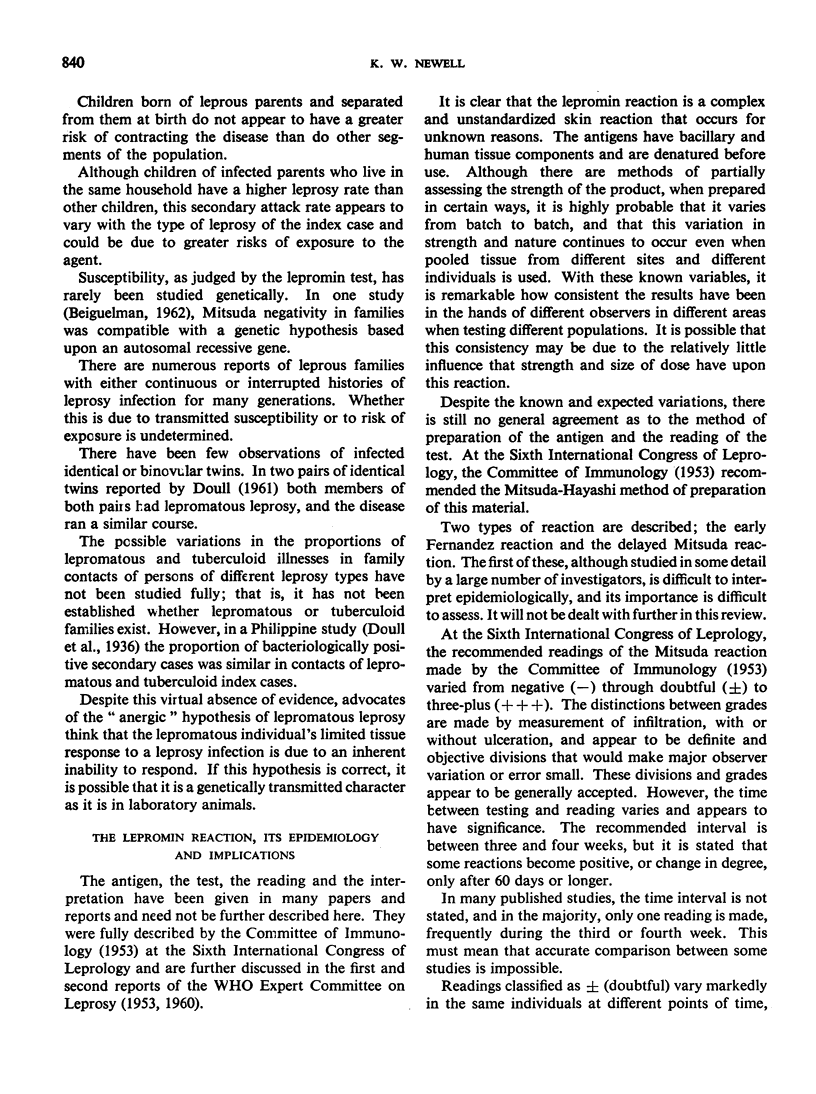
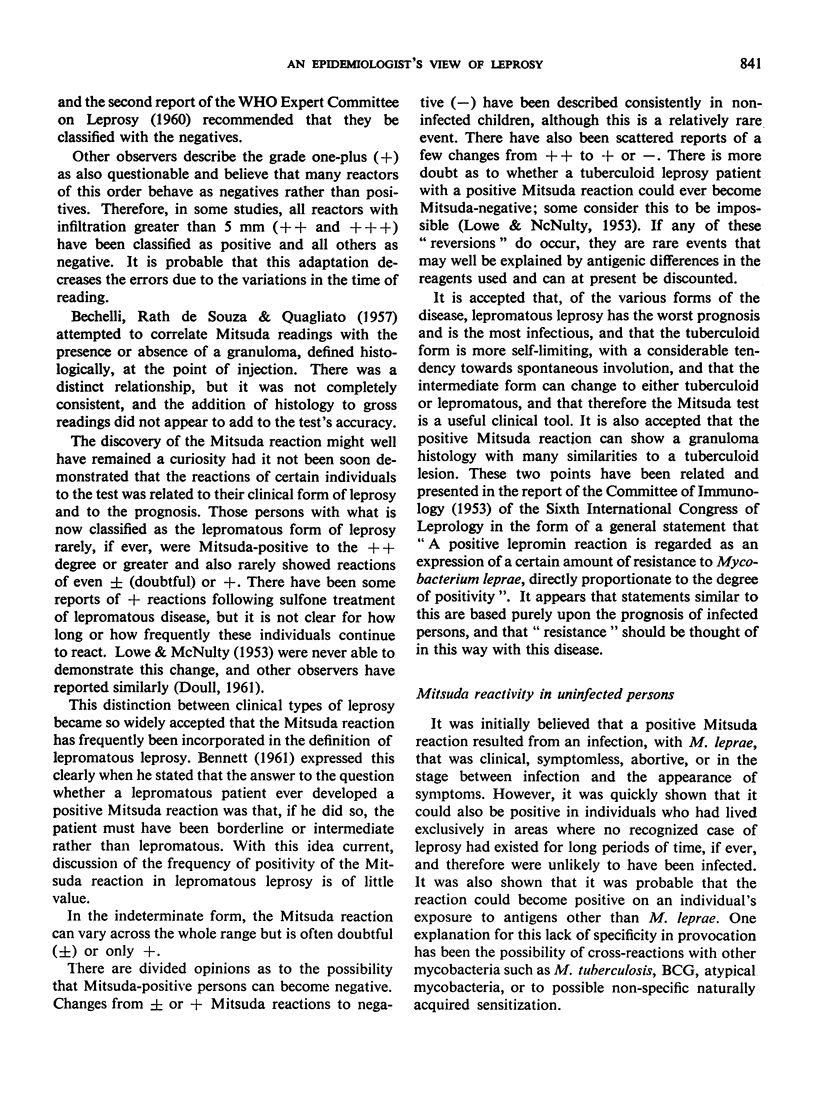
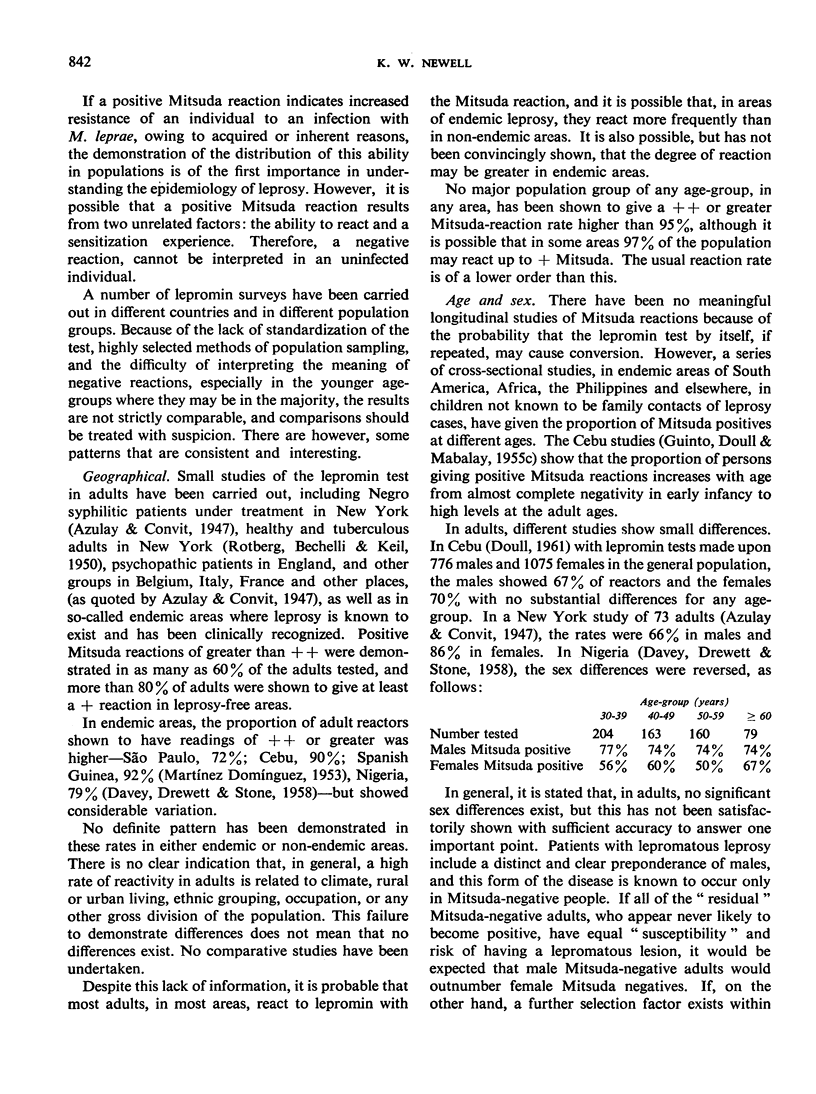
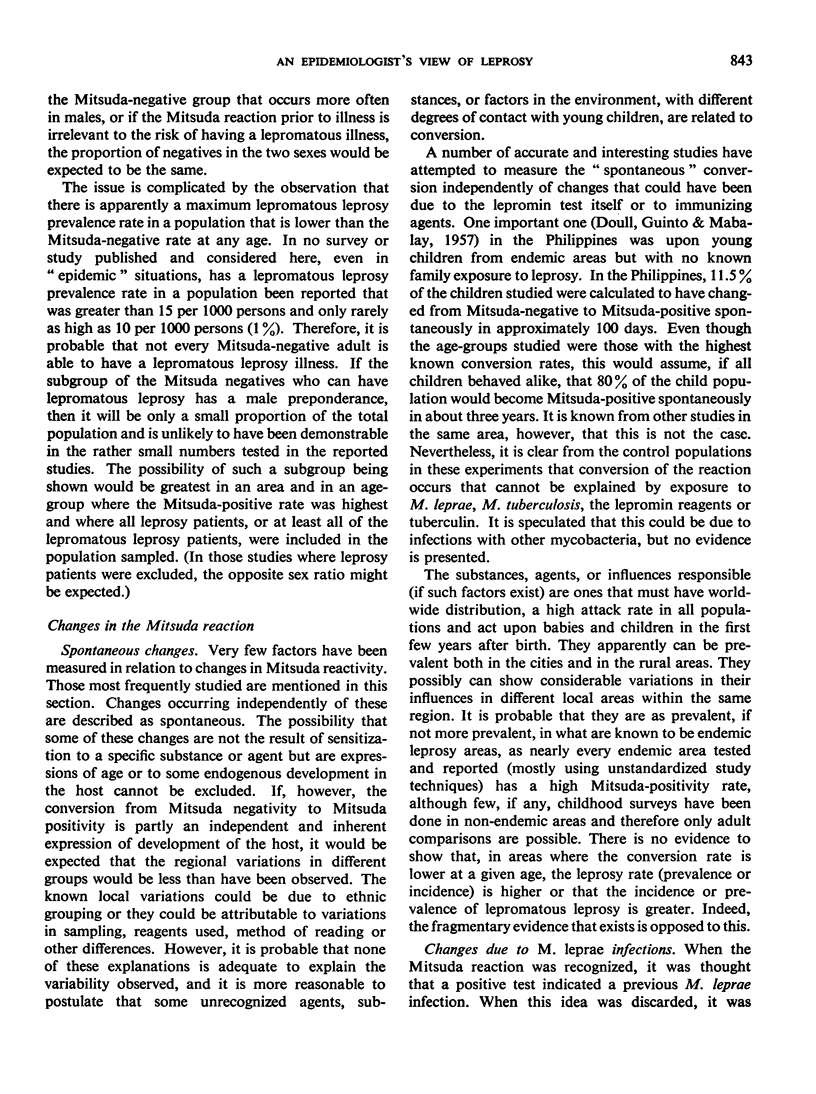
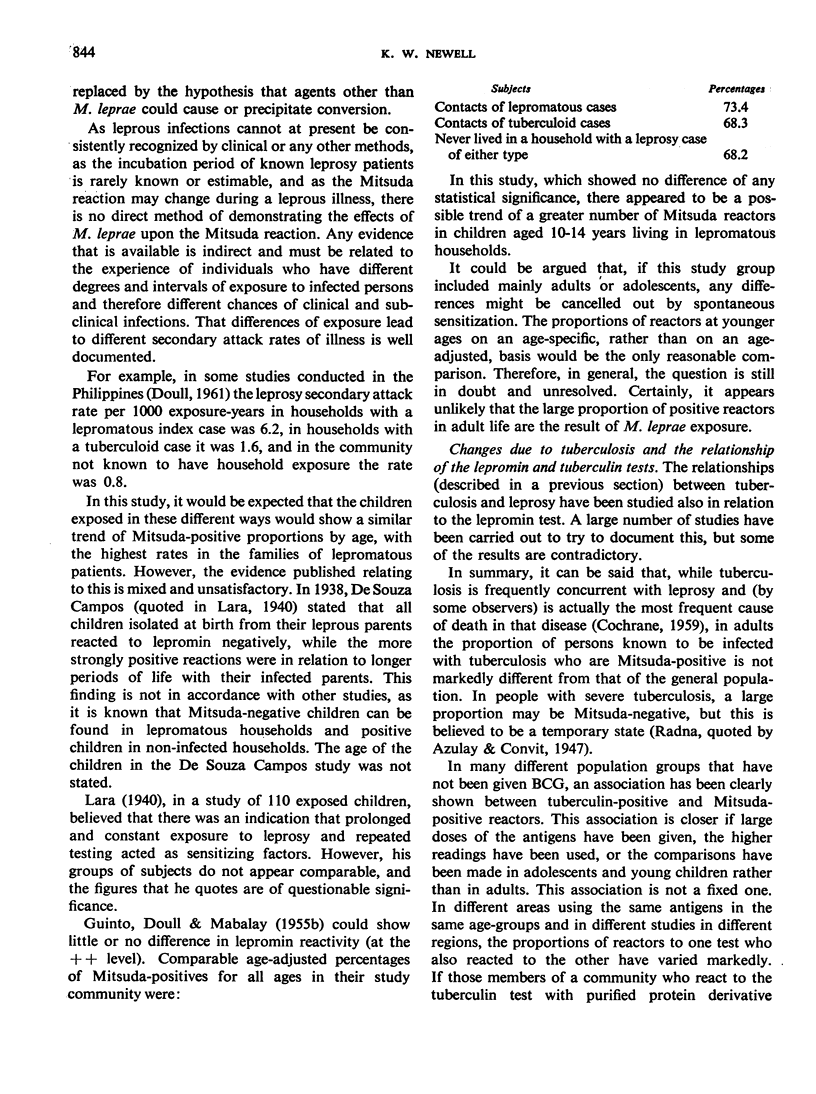
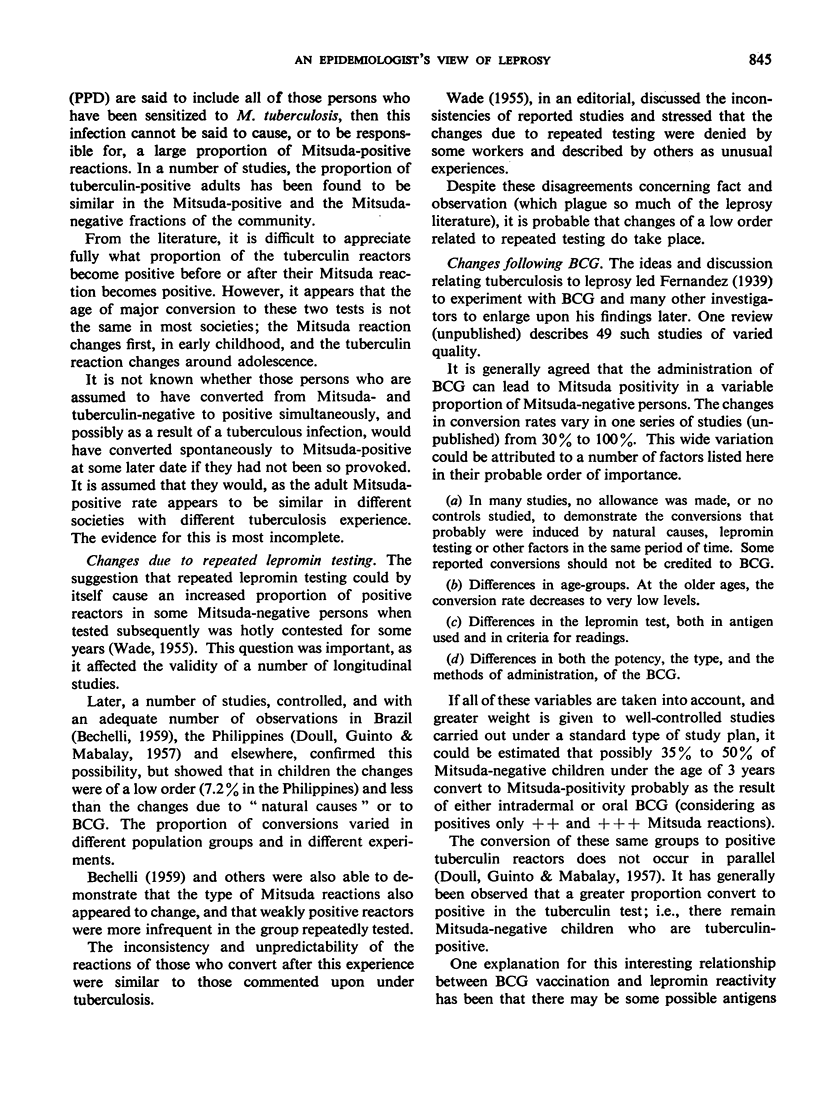
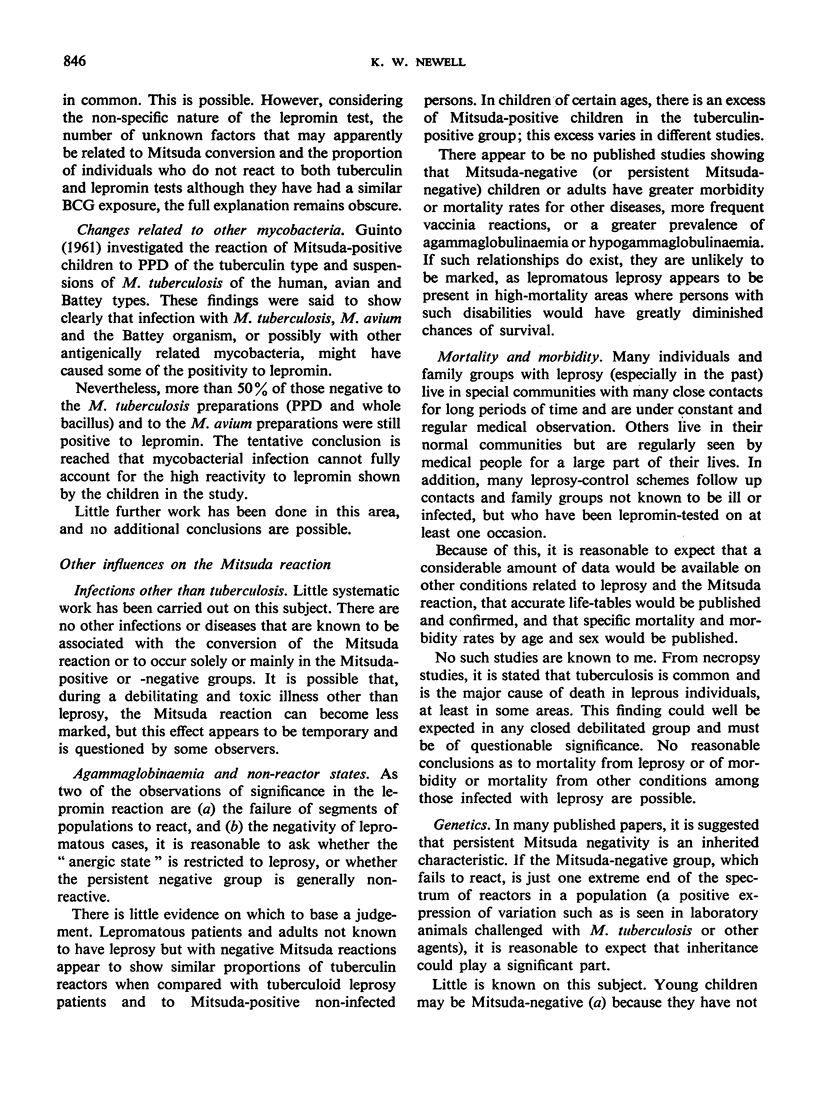
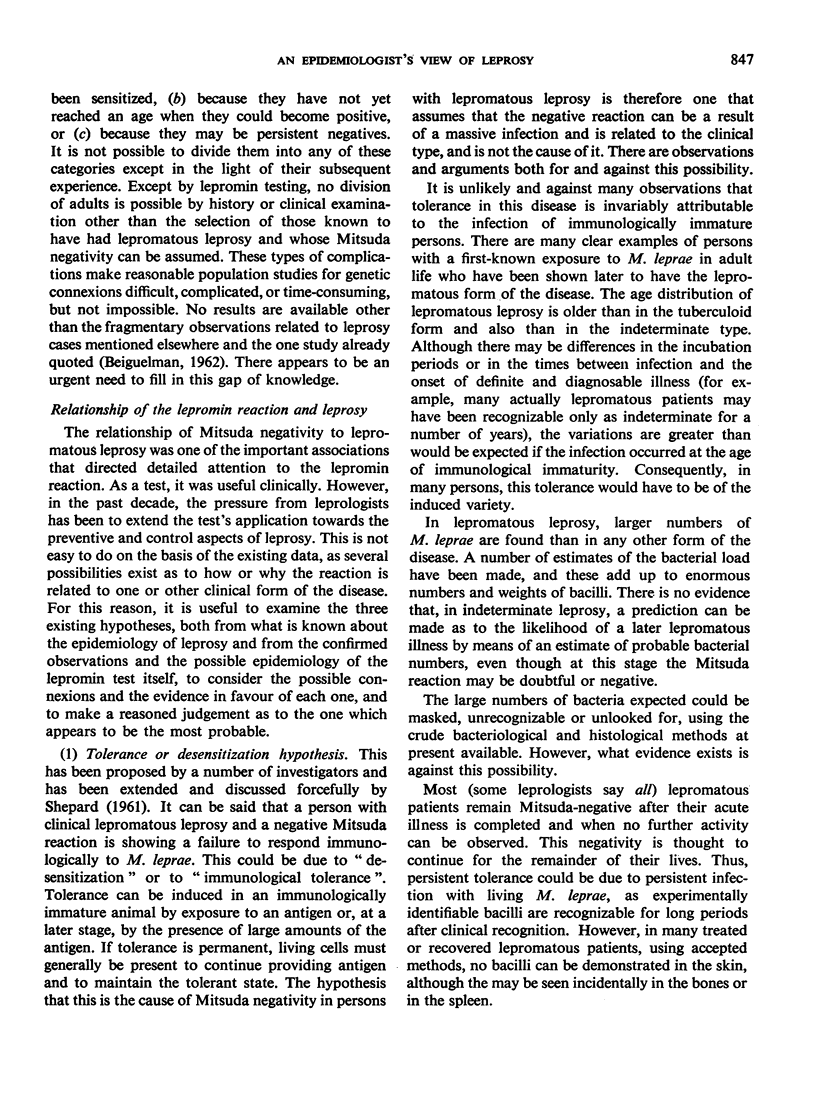
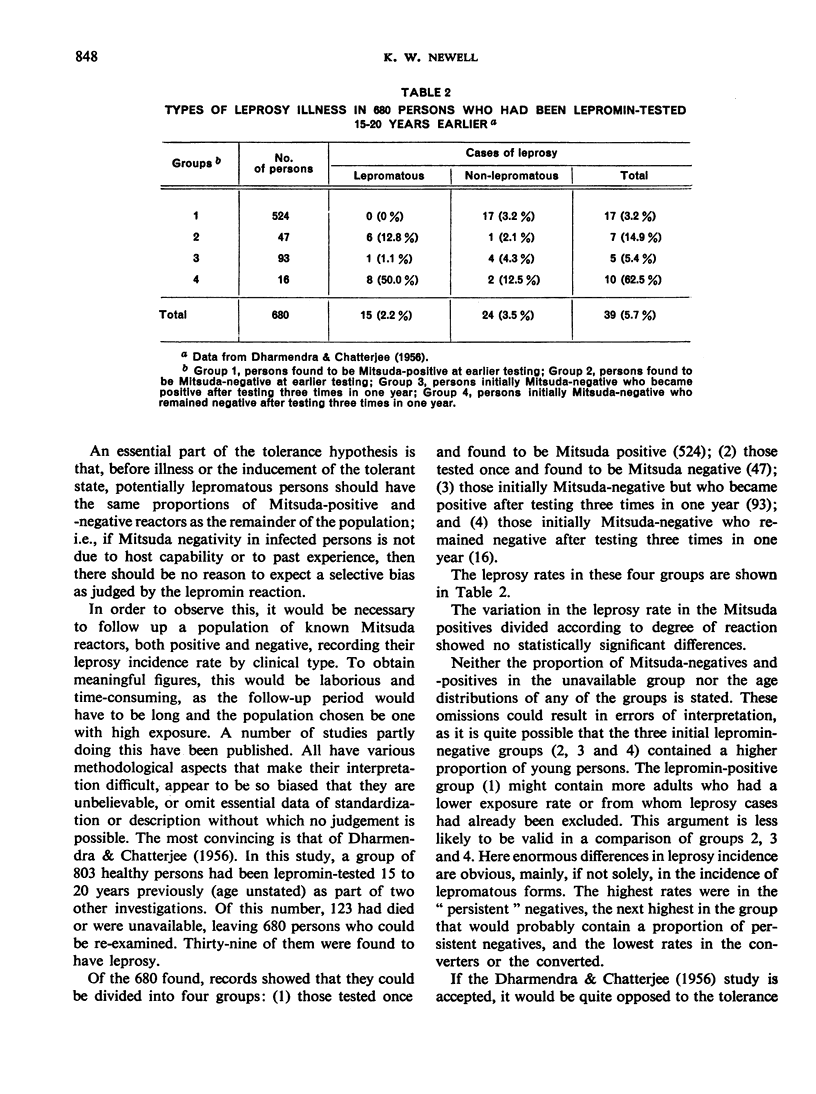
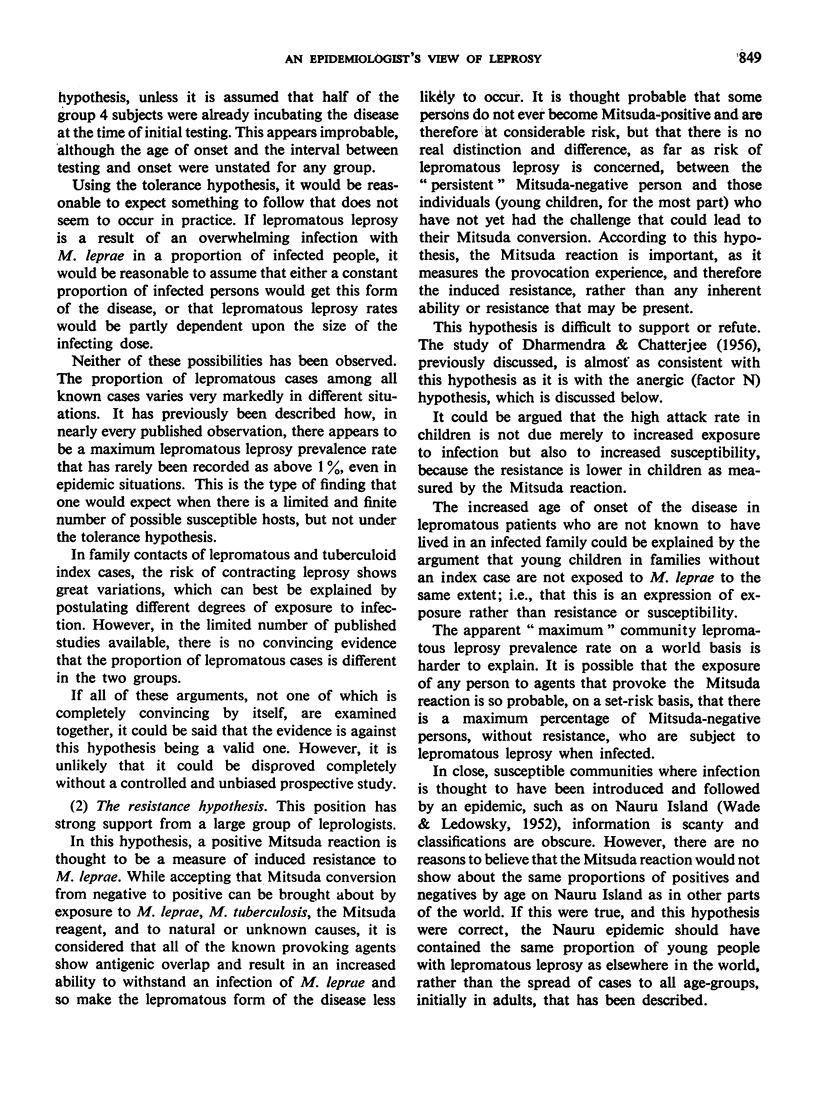
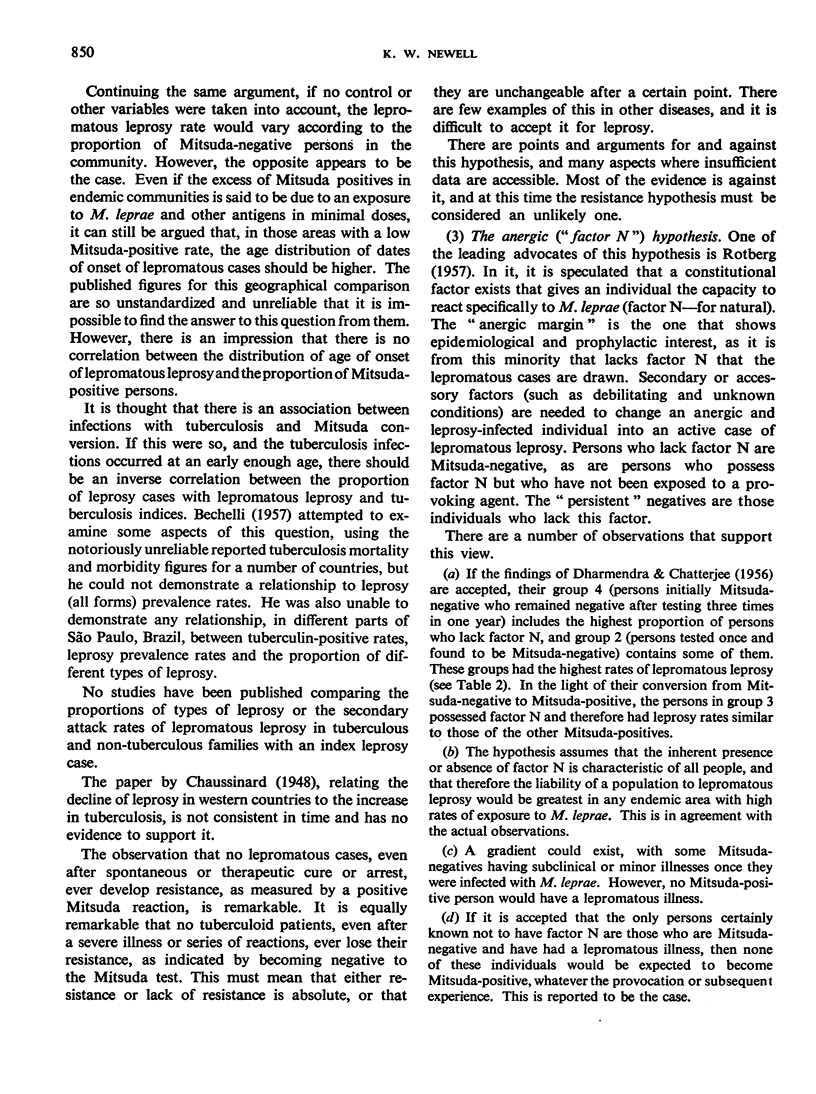

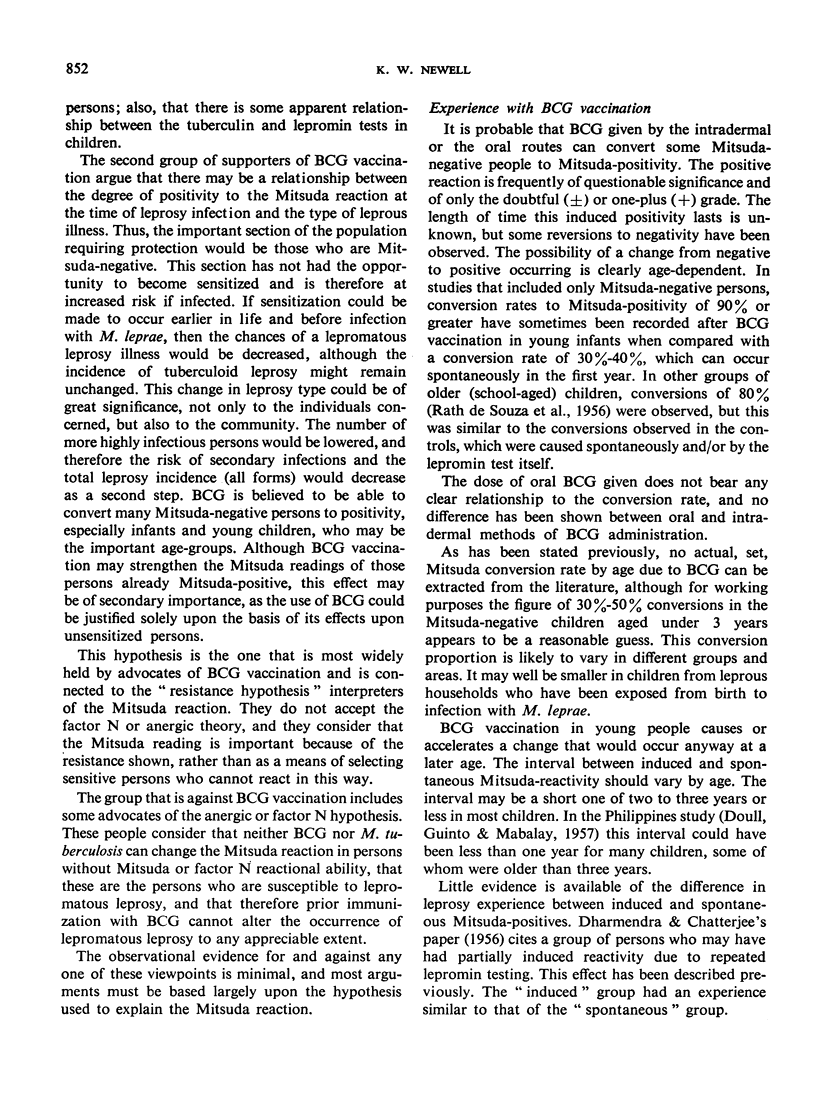
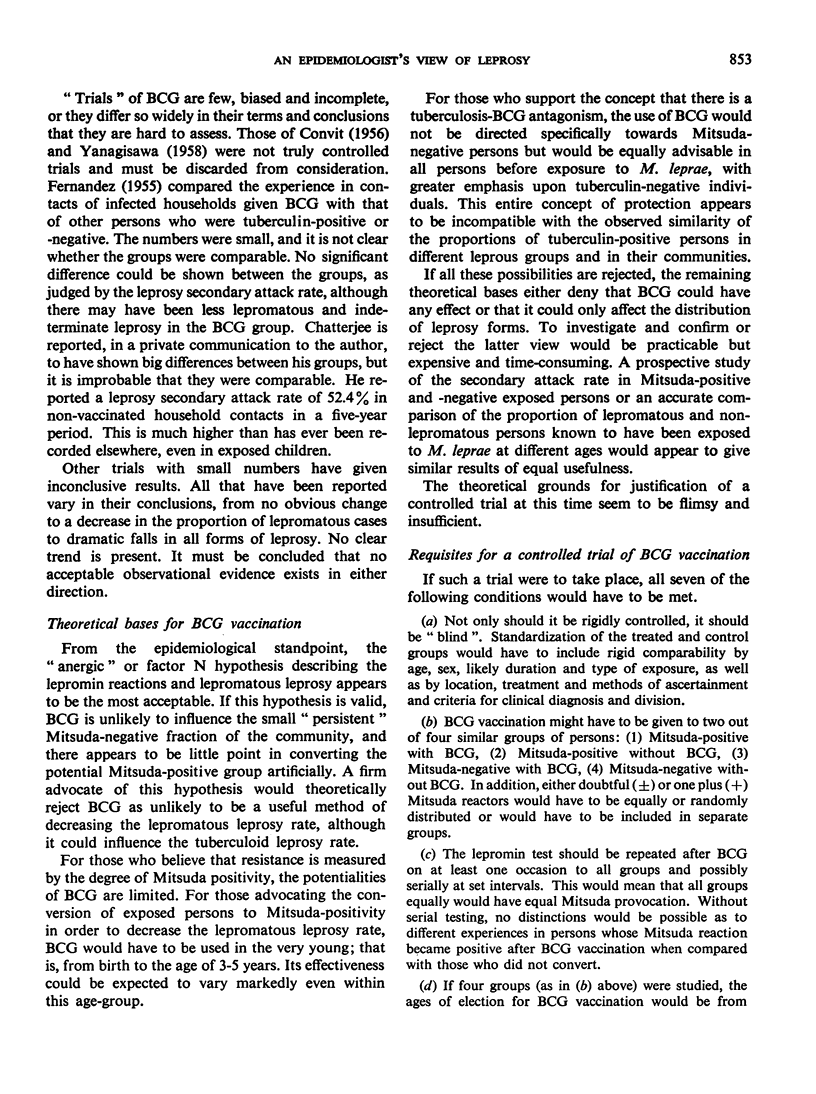
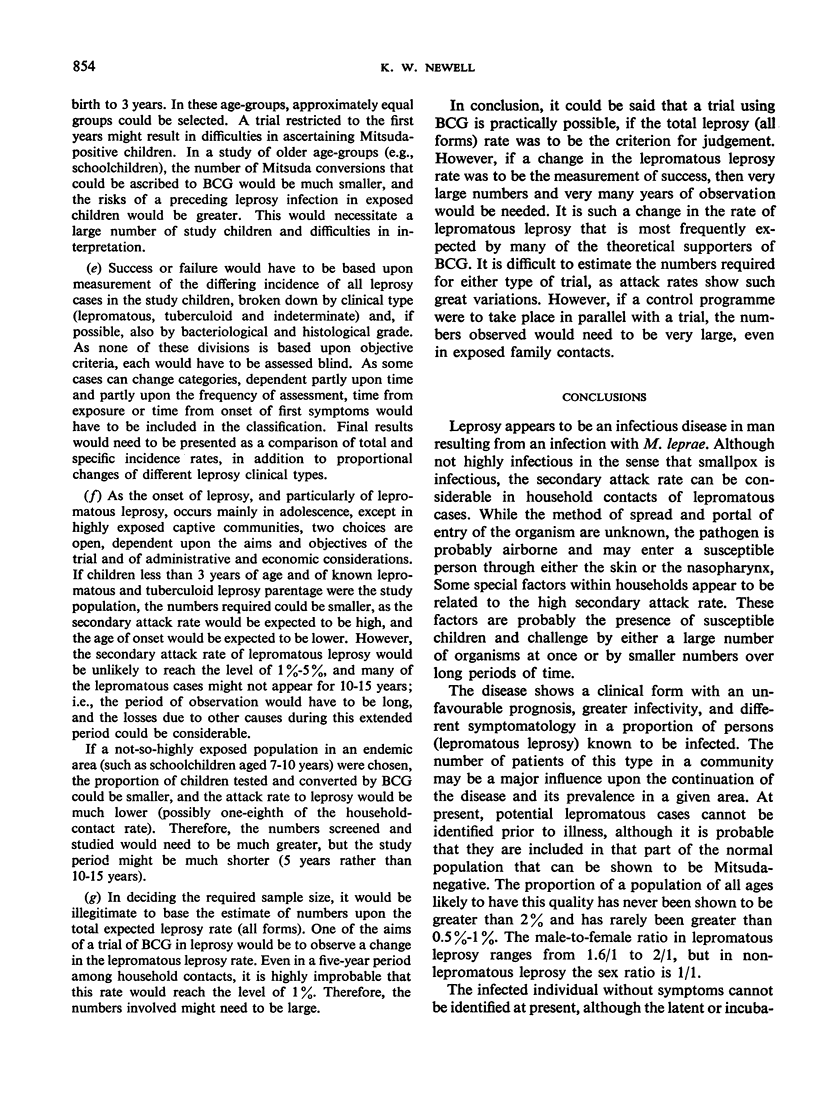
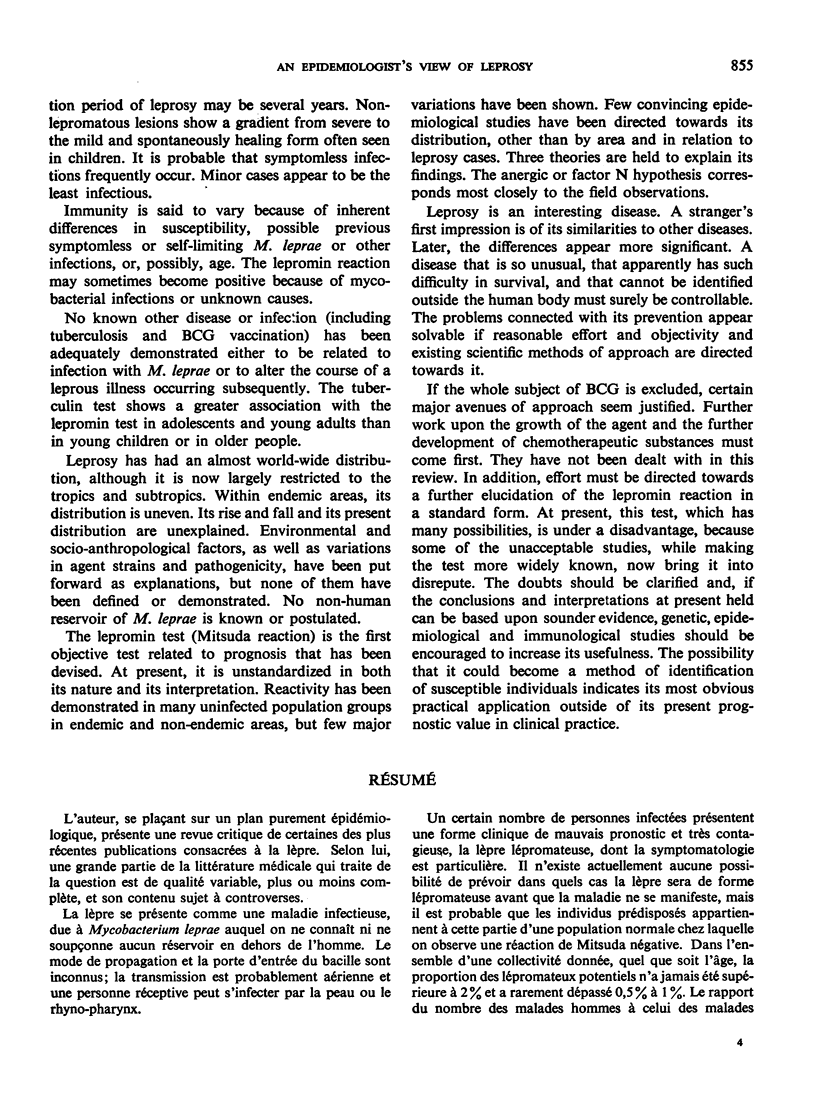
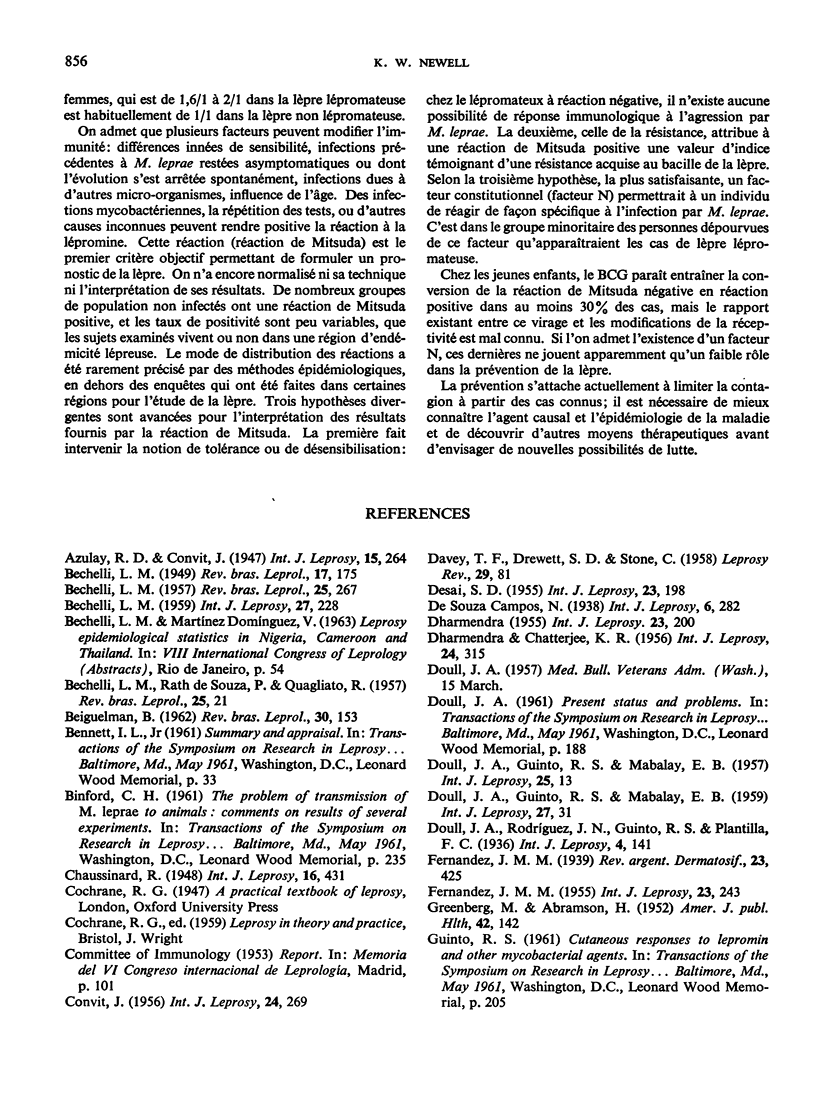
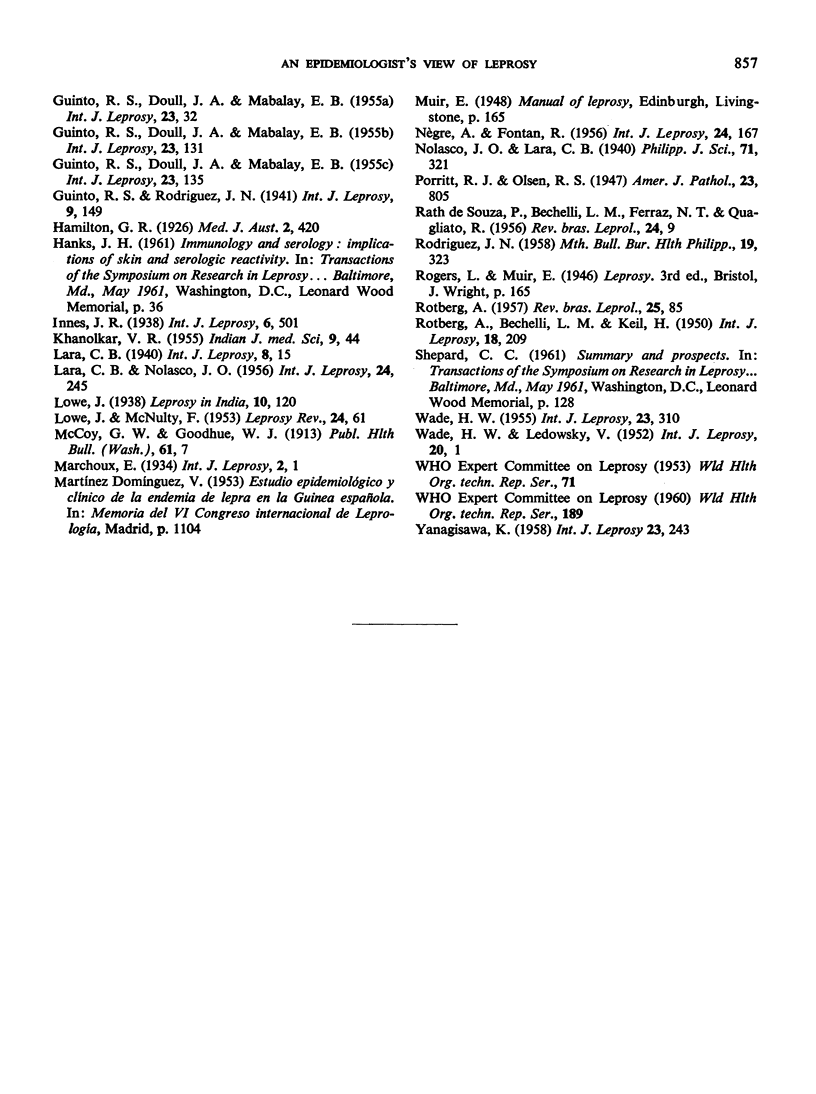
Selected References
These references are in PubMed. This may not be the complete list of references from this article.
- BECHELLI L. M. Reciprocidade do comportamento da infecço leprótica em face da tuberculose e vice-versa, do ponto de vista sorológico, imuno alérgico, clínico e epidemiológico. Rev Bras Leprol. 1957 Oct-Dec;25(4):267–295. [PubMed] [Google Scholar]
- BECHELLI L. M. The influence of repeated lepromin testing on the Mitsuda reaction in healthy people. Int J Lepr. 1959 Jul-Sep;27:228–235. [PubMed] [Google Scholar]
- CONVIT J. Studies of leprosy in the German ethnic group of Colonia Tovar, Venezuela. V. The morbidity rates in BCG-vaccinated and unvaccinated groups during five years. Int J Lepr. 1956 Jul-Sep;24(3):269–274. [PubMed] [Google Scholar]
- DAVEY T. F., DREWETT S. E., STONE C. Tuberculin and lepromin sensitivity in E. Nigeria. Lepr Rev. 1958 Apr;29(2):81–101. doi: 10.5935/0305-7518.19580009. [DOI] [PubMed] [Google Scholar]
- DOULL J. A., GUINTO R. S., MABALAY M. C. Effect of BCG vaccination, lepromin testing and natural causes in inducing reactivity to lepromin and to tuberculin. Int J Lepr. 1957 Jan-Mar;25(1):13–37. [PubMed] [Google Scholar]
- DOULL J. A., GUINTO R. S., MABALAY M. C. The origin of natural reactivity to lepromin; the association between the Mitsuda reaction and reactions to graded doses of tuberculin. Int J Lepr. 1959 Jan-Mar;27(1):31–42. [PubMed] [Google Scholar]
- FERNANDEZ J. M. Influence of the tuberculosis factor on the clinical and immunological evolution of child contacts with leprosy patients. Int J Lepr. 1955 Jul-Sep;23(3):243–258. [PubMed] [Google Scholar]
- FONTAN R., NEGRE A. Images radiologiques de lèpre pulmonaire. Int J Lepr. 1956 Apr-Jun;24(2):167–170. [PubMed] [Google Scholar]
- GREENBERG M., ABRAMSON H., COOPER H. M., SOLOMON H. E. The relation between recent injections and paralytic poliomyelitis in children. Am J Public Health Nations Health. 1952 Feb;42(2):142–152. doi: 10.2105/ajph.42.2.142. [DOI] [PMC free article] [PubMed] [Google Scholar]
- GUINTO R. S., DOULL J. A., MABALAY E. B. Tuberculization and reactivity to lepromin; association between lepromin and tuberculin reactions in school children in Cordova and Opon Cebu, Philippines. Int J Lepr. 1955 Jan-Mar;23(1):32–47. [PubMed] [Google Scholar]
- GUINTO R. S., DOULL J. A., WOOD L., MABALAY E. B. A note on the lepromin reaction in males and females of the general population of Cordova, Mactan Island, Cebu, Philippines. Int J Lepr. 1955 Apr-Jun;23(2):131–134. [PubMed] [Google Scholar]
- GUINTO R. S., DOULL J. A., WOOD L., MABALAY E. B. The Mitsuda reaction in persons with and without household exposure to leprosy. Int J Lepr. 1955 Apr-Jun;23(2):135–138. [PubMed] [Google Scholar]
- LARA C. B., NOLASCO J. O. Self-healing, or abortive, and residual forms of childhood leprosy and their probable significance. Int J Lepr. 1956 Jul-Sep;24(3):245–263. [PubMed] [Google Scholar]
- LOWE J., MCNULTY F. [Tuberculosis and leprosy; immunological studies]. Lepr Rev. 1953 Apr;24(2):61–90. doi: 10.5935/0305-7518.19530008. [DOI] [PubMed] [Google Scholar]
- Porritt R. J., Olsen R. E. Two Simultaneous Cases of Leprosy Developing in Tattoos. Am J Pathol. 1947 Sep;23(5):805–817. [PMC free article] [PubMed] [Google Scholar]
- ROTBERG A. Fator N de resistência á lepra e relaçes com a reatividade lepromínica e tuberculínica; valor duvidoso do BCG na imunizaço antileprosa. Rev Bras Leprol. 1957 Apr-Jun;25(2):85–106. [PubMed] [Google Scholar]
- WADE H. W. Induction of lepromin reactivity by repeated lepromin testing. Int J Lepr. 1955 Jul-Sep;23(3):310–315. [PubMed] [Google Scholar]
- WADE H. W., LEDOWSKY V. The leprosy epidemic at Nauru; a review, with data on the status since 1937. Int J Lepr. 1952 Jan-Mar;20(1):1–29. [PubMed] [Google Scholar]


